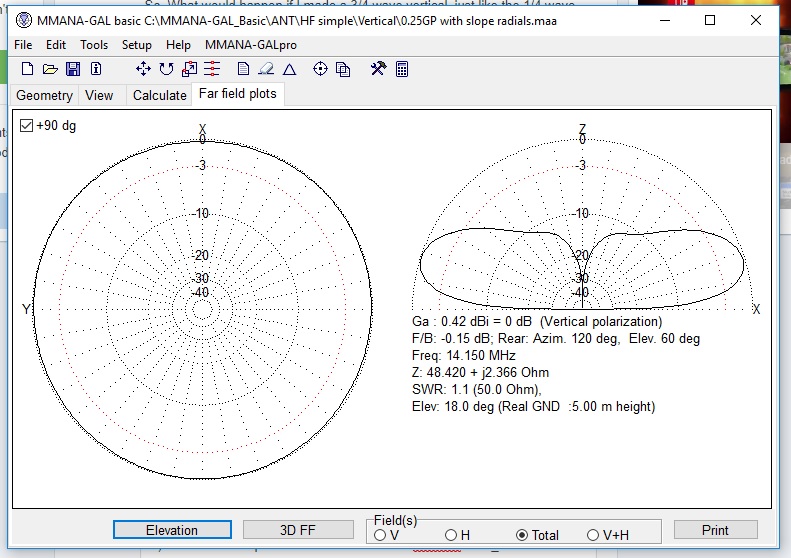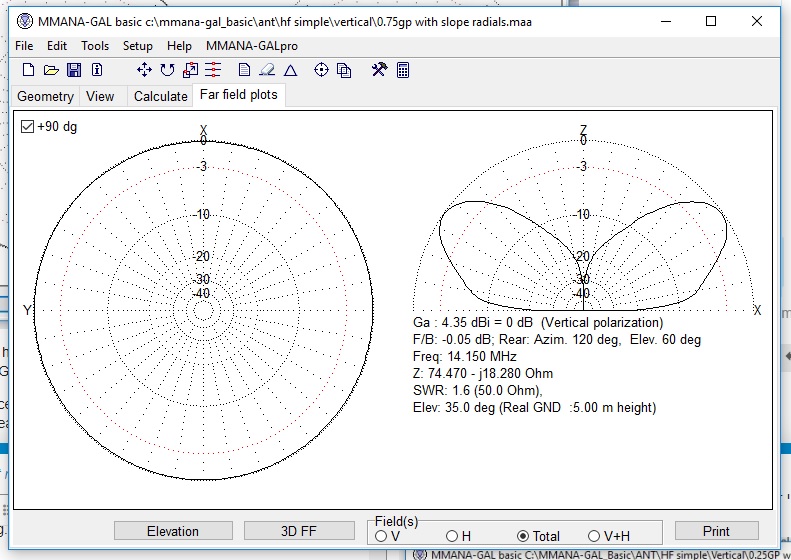For those that are interesting in modelling antenna, download “mmanabasic.zip” from here
http://hamsoft.ca/pages/mmana-gal.php
There are loads of examples to play with in the examples folder, and you can immediately see the predicted effect of tweaking after you have pressed “start”. You can also view the polar plot in 2D or 3D (press 3D FF) and rotate your viewpoint.
You can also change the height of the antenna with respect to actual ground (Change the “add height” option in the tab “Calculate” ) and mess about with the “type of ground”
Once installed, do the following:
- Execute MMANABASIC_GAL (Should be in your list of programs)
- Press “File–>Open” and select this file “C:\MMANA-GAL_Basic\ANT\HF simple\Vertical\0.25GP with slope radials.maa”
- Press the tab for “Calculate” and press the button “start”
- Press the tab for “Far Field Plots” and you get this plot - notice the SWR and calculated Impedance

If you want to see how things change, change a 1/4 wave vertical to a 3/4 wave vertical. All you have to do is press the tab for “Geometry” and change the Z2 length from 5.233258 to 15.699774, and repeat steps 3 and 4
What you will notice is that a 3/4 wave vertical has a higher angle of radiation and a worse SWR (because the impedance isn’t near 50 ohms) as per this
